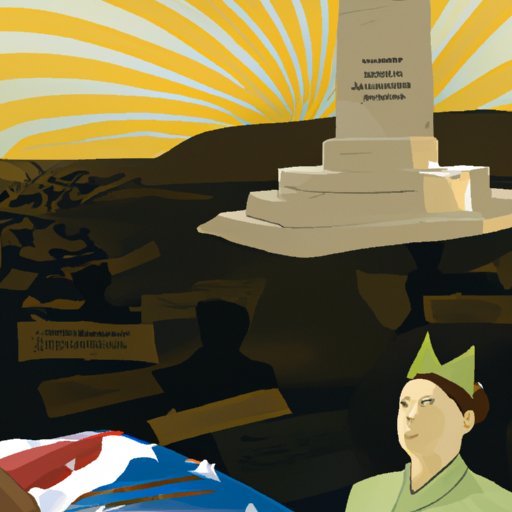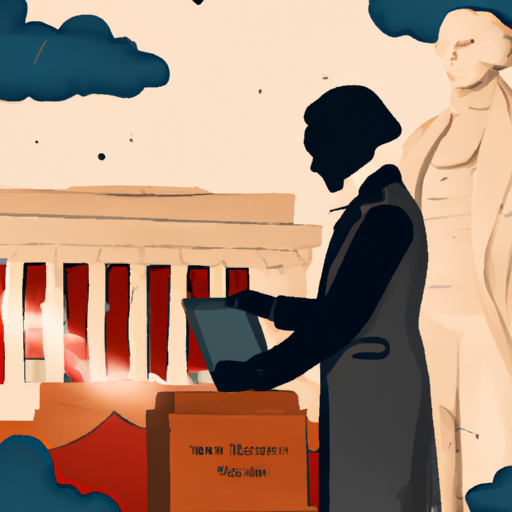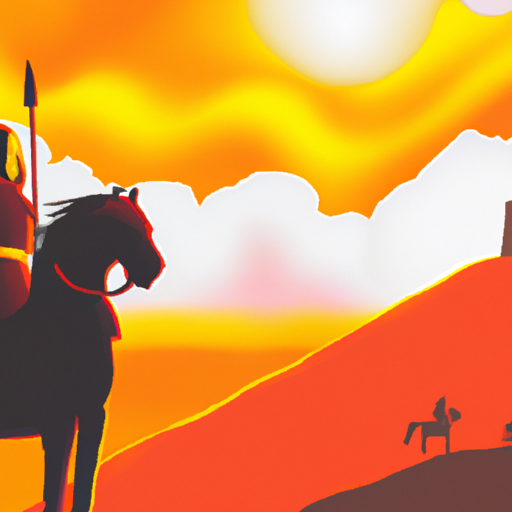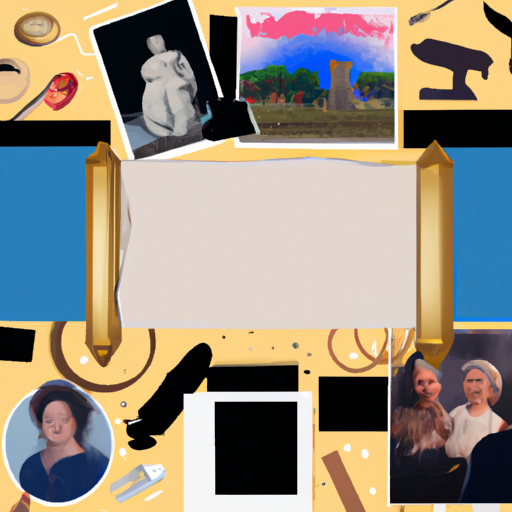A History of Victorian Female Stereotypes
Unearth the secret annals of Victorian-era female archetypes and investigate the progress we’ve achieved! Delve into the depths of a bygone era to uncover what was once thought of women, then reflect on how far our perceptions have shifted. Examine how these stereotypes have evolved over time and how our views have changed. Unveil the mysteries of the past to gain insight into our present.

Exploring the depths of history can be a powerful way to gain insight into the present. Unearthing the secret annals of female archetypes from the Victorian era, we can observe how our perceptions have evolved over time. Initially perceived as having limited roles in society, from housewives to caregivers, further study reveals that many women had far more agency than what was initially assumed.
Investigating these stereotypes and their shifts over time can yield valuable lessons about progress and empowerment for women today. Examining the past with an open mind, we can find inspiration to create a brighter future for generations to come. By delving into history, we may uncover new understandings of our current views on gender roles and equality.
Introduction
Amidst the sweeping changes that swept across Britain in the Victorian era, gender roles and expectations also underwent a transformation. Women were regarded as inherently weaker than men, both mentally and physically, thus necessitating their subservience to their husbands and confinement to domestic duties such as cooking and cleaning. Furthermore, they were thought to be more emotionally inclined and less competent when it came to making decisions. This remained the norm until the turn of the century when women began to challenge these rigid conventions and fight for their rights.
– History of Victorian Female Stereotypes
A period of the utmost propriety and moral rectitude, the Victorian era saw a distinct delineation between the roles of men and women. Women were expected to be submissive, passive, and obedient; devoted wives and mothers who placed their husband’s needs before their own; well-mannered, chaste, and pure in thought and deed. To emphasize their femininity while also protecting them from being viewed as too independent or forward, they were required to dress modestly at all times – donning corsets, long skirts, high necklines, gloves, hats, and veils even when engaging in activities such as gardening or horseback riding.
Though these expectations have since been replaced by more progressive ideals about gender roles, it is important to remember that our society today is still shaped by a history of social norms that have been handed down over centuries.
– Examining the Impact of Victorian Female Stereotypes on Society
The Victorian era was a time of stringent societal conventions which had a deep and long-lasting effect on how women were perceived and treated. Women were expected to be compliant wives, devoted mothers and chaste daughters, with limited autonomy or freedom. This led to gender roles that have been perpetuated through the years, and are still present in some form today.
In the workplace, women often encountered discrimination due to their gender; they were paid less than men for equal work, denied promotions or excluded from certain occupations altogether. Additionally, these stereotypes also shaped how people interacted with each other on a daily basis; men were seen as more authoritative while women were viewed as weaker and less capable.
These outdated ideas remain pervasive in our culture even now, manifesting in disparities between male and female wages for similar jobs, as well as unequal opportunities for advancement within certain industries. Furthermore, there are still instances where women are judged based on antiquated standards of beauty or chastity instead of their individual merits or abilities.
It is therefore clear that the legacy of Victorian female stereotypes has had an enduring impact on society which is still felt today. In order to achieve true gender equality across all aspects of life, it is important that we recognize these issues and strive towards progress moving forward.
– Analyzing the Role of Women in Victorian Times Through Stereotyping
A period of tremendous alteration in the social, economic, and political spheres of life characterized Victorian England. This era was marked by a significant transformation in the role of women in society. At the start of this period, traditional gender roles were still largely upheld and women were typically confined to domestic roles. By its conclusion, however, there was an increased emphasis on female education and job opportunities. Despite these steps forward, Victorian culture still perpetuated stereotypes about women that limited their potential and created a culture of inequality. Through an analysis of popular literature and art from this period, it is possible to gain insight into how women were viewed during this time and how these stereotypes impacted their lives.
In literature from the Victorian era, there are several archetypes used to depict women: the angel in the house, the fallen woman, and the new woman. The angel in the house was seen as an idealized representation of womanhood: pure, submissive, and devoted to her husband and children. The fallen woman was depicted as promiscuous or immoral; she was often ostracized from society or forced into prostitution as punishment for her perceived sins. The new woman challenged traditional gender roles by seeking independence through education or employment. While these characters provide insight into how women were viewed during this period, they also reinforced stereotypes about femininity that limited female autonomy.
Visual art from the Victorian era also reveals how women were stereotyped during this time. Paintings often portrayed passive female figures surrounded by symbols of domesticity such as children or household items like sewing needles or spinning wheels. These images depicted an idealized version of womanhood that emphasized domesticity over any other pursuits outside of marriage and motherhood. Similarly, photographs taken during this time often featured posed portraits with feminine clothing and hairstyles meant to emphasize traditional gender roles within society.
In conclusion, analyzing popular literature and visual art from Victorian times provides insight into how women were stereotyped during this period. It is evident that while some advances in female education and employment opportunities were made during this time, many aspects of traditional gender roles still remained which limited female autonomy within society.
– Exploring the Cultural Expectations for Victorian Women Through Stereotyping
Amidst the 19th century, societal and cultural change was rampant in Britain, particularly with regard to women. In this period, there were stringent expectations of how females should conduct themselves in society; these often hinged on stereotypes. This essay will investigate the social expectations for Victorian women through the lens of history.
In that epoch, a woman was anticipated to be meek and compliant to her husband. Females were supposed to address domestic tasks such as cooking, cleaning and childcare. Moreover, they were expected to be devout and chaste; any indication of sexual immorality could lead to public humiliation or even incarceration. Furthermore, they had to dress modestly and not draw attention away from others in public spaces. These principles were frequently upheld by strict laws that restricted women’s rights and freedoms.
The concept of a “respectable” woman was tightly connected with class; middle-class women were held up as exemplars of perfect femininity while working-class women were usually portrayed as immoral or uncouth. This distinction between “good” and “bad” female behaviour endured throughout the Victorian era, despite some feminists’ attempts at overturning these stereotypes.
In conclusion, the cultural demands for Victorian women are still applicable today in many ways. We can look back at this time in history to get a better understanding of how gender roles have changed over time and how they continue to influence our society today. By studying these archetypes from an historical point of view, we can gain insight into our own culture’s attitudes towards gender roles and equality among men and women.
– Investigating How Female Stereotypes Have Changed Over Time in Victorian History
The 19th century was a period of tremendous transformation for Britain’s female population. From the traditional roles of wife and mother, women began to break away from these expected duties and seek independence. This shift in female stereotypes is an intriguing one, providing insight into how gender roles have changed over time.
At the start of the Victorian era, it was believed that women were naturally suited to domestic roles due to their weaker physical and mental abilities compared to men. Religion further reinforced this notion by declaring man as the first creation, followed by woman as his helper.
As the Victorian age progressed though, females began breaking away from these restrictions through changes in clothing such as bloomers and corsets which allowed them more freedom of movement. Education also improved significantly during this period with a higher number of girls attending school than ever before.
In the late 19th century, even more progress was made with laws granting married women rights over their own property and earnings, giving them greater control over their financial affairs without having to rely on male relatives for support. Additionally, suffrage movements helped set the stage for women’s full political rights in the 20th century.
By looking at how female stereotypes have altered throughout the Victorian era we can gain a better understanding of how gender roles have evolved over time. Although certain traditional views still exist today, there has been considerable advancement towards achieving true equality between men and women since Victorian times.
Conclusion

The gender roles of the Victorian era depicted women as docile and subservient to men, a notion that was entrenched in culture and had long-lasting effects on the trajectory of female rights. Subsequent eras have seen significant growth in terms of gender parity, yet many of these antiquated stereotypes remain present.
Some questions with answers
Q1: What were Victorian female stereotypes?
A1: Victorian female stereotypes focused on the idea of a woman’s place being in the home, as well as the notion that women were passive and weak.
Q2: How did these stereotypes shape society?
A2: These stereotypes influenced how women were viewed and treated in society. Women were expected to be subservient to their husbands and fathers, and they had limited access to education and employment opportunities.
Q3: What was the role of women in Victorian society?
A3: The role of women in Victorian society was primarily domestic; they were expected to take care of the home and children, while their husbands worked outside the home. Women also had limited access to education and employment opportunities.
Q4: How did Victorian culture view marriage?
A4: In Victorian culture, marriage was seen as a way for a woman to gain social status and financial security. Marriage was also seen as an institution that provided stability for both partners.
Q5: How has our understanding of history changed since then?
A5: Our understanding of history has changed significantly since then, particularly with regards to gender roles. We now recognize that gender roles are socially constructed and can change over time, rather than being fixed or immutable. We also understand that individuals have agency in shaping their own lives, regardless of their gender or social status.





